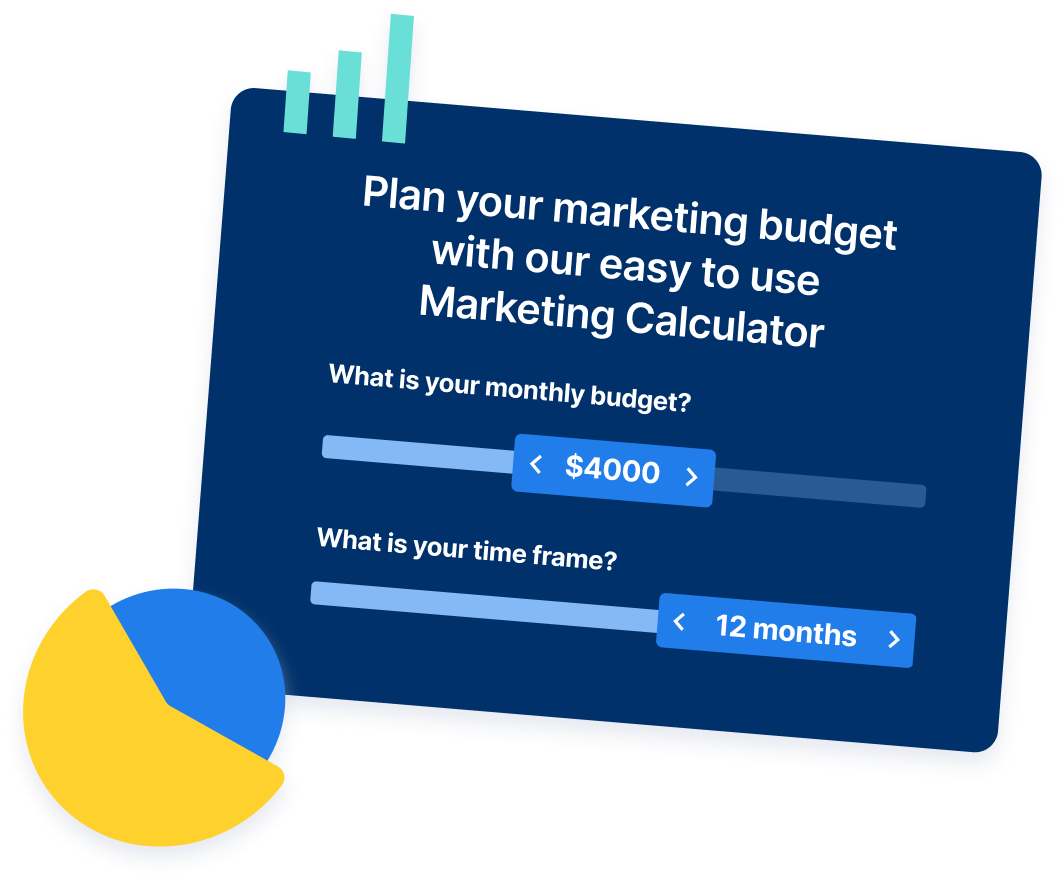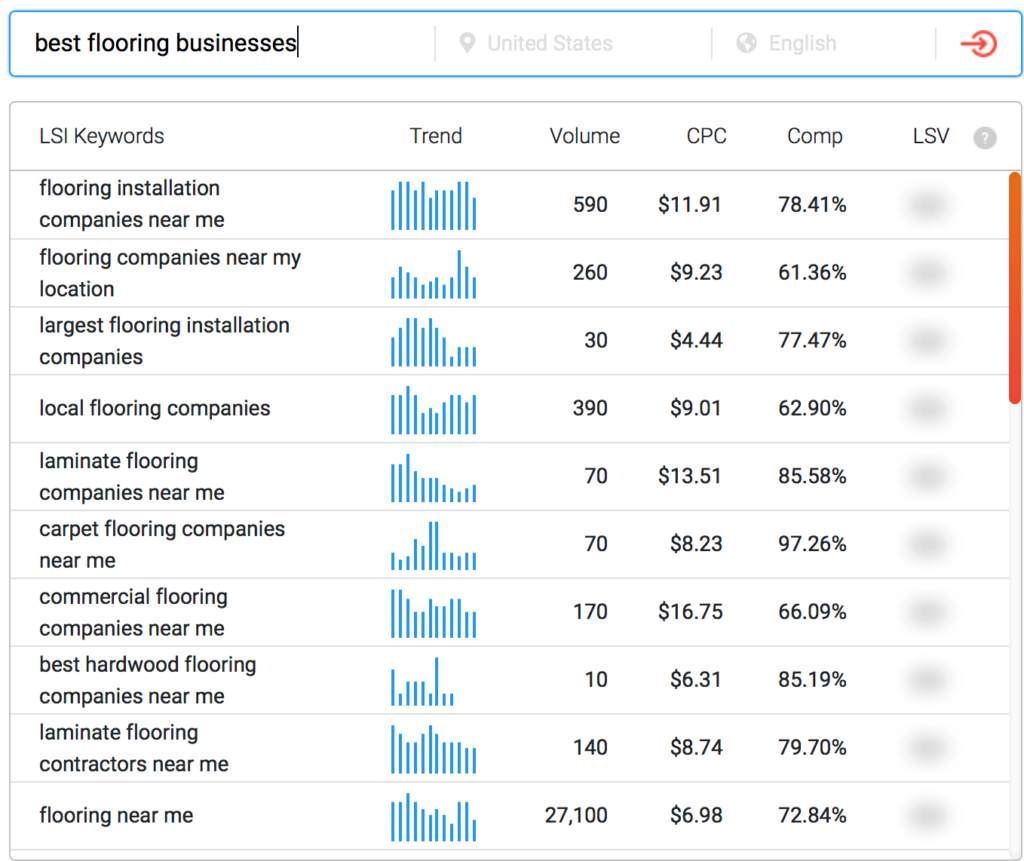-
 10 min. read
10 min. read
-
 Macy Storm
Macy Storm Content Marketing Consultant
Content Marketing Consultant
- Macy is a content marketing consultant with over five years of experience creating content for dozens of industries including home services, recreation, and education. She’s written about every marketing topic under the sun, from SEO to AI to email marketing. Her work has been featured by Search Engine Journal, HubSpot, Entrepreneur, Clutch, and more. In her free time, Macy enjoys crafting, reading comic books, and walking her dog Daisy.
What is Quality Score?
Quality score is a metric used by search engines to evaluate the relevance and effectiveness of a website’s content, ultimately impacting its ranking in search results.
How can you decrease your Google Ads costs and increase your ad rankings? Improve your Google Quality Score. Google’s Quality Score measures the quality of your ads, keywords, and landing pages on a 1-10 scale.
Three components influence your Quality Score: Click-through rate (CTR), ad relevance, and landing page experience. Earn a higher Quality Score, and your ads can earn better placements at a lower cost. Keep reading to learn more about Quality Score, including:
- What is Quality Score?
- What are the components of Quality Score?
- How does Quality Score on Google work?
- What is a good Quality Score?
- Why is Google’s Quality Score important?
- How to improve Quality Score
For even more tips on how to increase your Quality Score on Google Ads — while staying on top of the latest digital marketing trends and tactics — subscribe to Revenue Weekly and join more than 150,000 other clever marketers!
What is Quality Score in Google Ads?
Quality Score from Google Ads is a measurement of your pay-per-click (PPC) ads’ quality and relevancy. Google generates your Quality Score, which ranges from 1-10, by evaluating your ads’ landing page experience, keywords, and CTR.
What are the components of Quality Score?
The official components of Quality Score are:
Expected click-through rate
Your CTR is the percentage of people who click on your ad compared to people who view your ad. When your ad is more relevant to your audience, they’re more likely to click.
Google wants to promote ads with a higher CTR because they’re more valuable to users, which is why CTR is one of its Quality Score components.
Keyword relevance
Your keyword must match your advertisement. If you’re a veterinarian targeting “best burger places” in your ads, that keyword isn’t relevant. Google’s Quality Score ensures that your keyword selection matches your ad copy and landing page.
Landing page relevance and quality
Google analyzes your landing page to ensure that it’s relevant to your targeted keywords.
It also examines the quality of your landing page and uses that to determine if your landing page matches your keyword targeting. Besides the above Quality Score components, Google also analyzes your ad text to determine if it relates to your keyword. It wants to ensure you’re delivering relevant information to users that search using your targeted keywords.
These are the components of Quality Score that help determine your rating. While marketers don’t know how much each factor influences Quality Score, many believe that CTR is the most important metric.
How does the Google Ads Quality Score work?
Google’s Quality Score uses “wisdom of the crowds.” When Google shows ads to users, it wants to provide an advertising experience that’s relevant to a person’s search query. To help Google determine if your ad is related to the search and user, it uses Quality Score.
Quality Score for Google AdWords operates on a scale of 1 to 10, with 10 being the best score. You want to have a Quality Score as close to 10 as possible, so you get a higher placement in paid search results. Google will base your score on how users interact with the search engine results pages (SERPs). These interactions help Google predict future actions, as well as your ads’ relevancy.
It’s better to have a high Quality Score and low bid than a low Quality Score and high bid. That’s because your ad is more relevant, so Google gives it a better position in search results.
What is a good Quality Score?
A good Quality Score depends on the keyword: Branded, competitor, high-intent, or low-intent. For branded keywords, a good Quality score is 8-10, while a good Quality Score for competitor keywords is 3 or above.
A good Quality Score for high-intent keywords is 7-9, while a good Quality Score for low-intent keywords is around 7.
Why does Quality Score on Google Ads important?
Quality Score is essential to your business for three reasons:
1. Quality Score determines whether you can enter an ad auction
Your Quality Score on Google Ads determines if you can enter an ad auction. Since Google only wants to show the most relevant ads, it uses Quality Score to determine if your ad makes sense for the keyword and search intent. Remember, Google makes money when people click on your ads.
If your ad isn’t relevant, people won’t click on it. It’s a lose-lose situation because you won’t get leads, and Google won’t get revenue. That’s why Google uses your website’s Quality Score to help determine if your ad will perform well and get clicks for its targeted keyword.
If you want to get in relevant ad auctions, you must focus on improving your Google Ads Quality Score.
2. Quality Score determines how your ad is ranked
Your Quality Score determines your ad’s ranking too. More than 45% of page clicks go to the top three PPC ad positions. If you want your ad to rank in these highly clickable positions, you need a high Quality Score.
Quality Score influences where your ad appears. When you have a better Google Quality Score, you can earn a better position in paid search results.
3. Quality Score determines your CPC
Your Google Ads Quality Score also matters because it determines your cost per click (CPC). With CPC, you set a maximum bid, which is the amount you’re willing to spend when someone clicks on your ad. When you improve your Quality Score, you can lower your CPC, which means you’ll pay less for attracting high-quality leads.
When you have a higher Quality Score, you pay less for clicks on your ad. You’ll spend less than your maximum bid, which can help you optimize your monthly ad spend by earning more clicks, leads, and sales. Improve your Quality Score, and you’ll help your business save money without sacrificing lead quality.
How do I improve my Quality Score?
If you aren’t happy with your Quality Score on Google, check out these tips for improving your Quality Score:
1. Bid on relevant keywords
Keywords are vital to your paid ad campaigns. When you bid on keywords, you tell Google where you want your ads to appear. But to obtain a high Quality Score, it’s critical to target the right keywords — specifically, relevant ones.
Let’s say you sell backpacks and suitcases, and you want to run an ad for them.
If the ad focuses more on backpacks, you probably shouldn’t bid on a keyword like “heavy-duty suitcases,” because that isn’t very relevant to the content of your ad.
This scenario goes both ways, of course — just as you should choose keywords that are relevant to your ads, you should create ads that are relevant to your keywords.
2. Optimize your ad groups
Ad groups are a feature of Google Ads that makes it easier for you to organize your promotional content. They’re basically groups of ads and keywords that go together.
As an example, let’s say you want to advertise your office chairs. To do that, you could create several different ads for the same product.
You might also want to target several different keywords that include the phrase “office chair.”
By putting all those ads and keywords together in an ad group, you’d set it up so that all the ads in that group would appear for all the keywords, resulting in a variety of ad combinations.
When you do this, though, be sure all your ads and keywords work together. Double-check that every possible ad and keyword combination makes sense within each given ad group.
3. Use negative keywords
While most keywords are meant to show Google which searches your ads should appear in, negative keywords do the opposite — they tell Google where to avoid displaying your ads.
Let’s say you sell printers, so you target “printers for sale” as one of your keywords. Google might target variations on that keyword, including “3D printers for sale.” If you don’t sell 3D printers, you don’t want your ads showing up in that search.
By adding “3D” as a negative keyword, you can avoid wasting your ad resources on irrelevant searches. That will lead to a higher overall CTR since your ads will only be showing up for interested users — and that, in turn, will improve your Quality Score.
4. Write compelling ad copy
Another of the best Quality Score tactics to use is to create ad copy that draws in users. By “ad copy,” we mean the heading and description that appears in search results. Whatever you write, you should aim to drive users to click, as that will ultimately improve your CTR.
For example, if you’re advertising TVs, don’t title your ad “Buy our TVs on our website.” That’s not very compelling.
Instead, write a heading that says something like, “Best flat screen TVs around — shop deals at [your company].” Words like “best” and “deals” will jump out at users and entice clicks.
5. Match your ad copy with your landing pages
As critical as it is to write compelling ad copy, be sure you’re not misleading users with it. If your ad copy indicates one thing and your landing page offers another, users won’t be happy — and neither will Google.
If you want to improve your Quality Score, you need your ad copy and landing pages to match. That means you need to be careful with your wording.
Don’t advertise a “special discount” in your heading if you don’t make any mention of a discount on your landing page.
When your landing pages and ad copy are in sync, users will engage more, and Google will take notice.
6. Simplify your landing pages
Last on our list of Quality Score tactics for improvement is simplifying your landing pages. When users click on your ads, they should be overwhelmed by how much is happening on the page. Don’t put a bunch of buttons on the page or make them read long paragraphs of text.
Instead, keep things simple.
Only provide critical details relevant to your ad copy and direct visitors to a central call to action (CTA). The landing page should make it abundantly clear what you want them to do, with minimal clutter on the page.

As a result, you’ll end up driving more conversions, which will help boost your Quality Score.
WebFX is a Partner in Driving Results
Hear from HydroWorx, who saw a 131% increase in organic forms by partnering with WebFX
Improve your Google Ads Quality Score today
Your Quality Score affects how your ad performs in search results. If you want to help your ad rank higher in search results, you must improve your Quality Score.
Increasing your Google Ads Quality Score enables you to drive more leads and sales for your business. If you aren’t sure how to get started with improving your Quality Score, our team at WebFX can help. We have a team of over 500 PPC experts that will help you grow your business.
We’ll help you improve your ad and keyword selection to drive more relevant results for your business. To learn more about how you can improve your ad’s Quality Score, contact us online or call us today at 888-601-5359 to speak with a strategist about our PPC plans.
-
 Macy is a content marketing consultant with over five years of experience creating content for dozens of industries including home services, recreation, and education. She’s written about every marketing topic under the sun, from SEO to AI to email marketing. Her work has been featured by Search Engine Journal, HubSpot, Entrepreneur, Clutch, and more. In her free time, Macy enjoys crafting, reading comic books, and walking her dog Daisy.
Macy is a content marketing consultant with over five years of experience creating content for dozens of industries including home services, recreation, and education. She’s written about every marketing topic under the sun, from SEO to AI to email marketing. Her work has been featured by Search Engine Journal, HubSpot, Entrepreneur, Clutch, and more. In her free time, Macy enjoys crafting, reading comic books, and walking her dog Daisy. -

WebFX is a full-service marketing agency with 1,100+ client reviews and a 4.9-star rating on Clutch! Find out how our expert team and revenue-accelerating tech can drive results for you! Learn more
Try our free Marketing Calculator
Craft a tailored online marketing strategy! Utilize our free Internet marketing calculator for a custom plan based on your location, reach, timeframe, and budget.
Plan Your Marketing Budget

Proven Marketing Strategies

Proven Marketing Strategies
Try our free Marketing Calculator
Craft a tailored online marketing strategy! Utilize our free Internet marketing calculator for a custom plan based on your location, reach, timeframe, and budget.
Plan Your Marketing Budget






